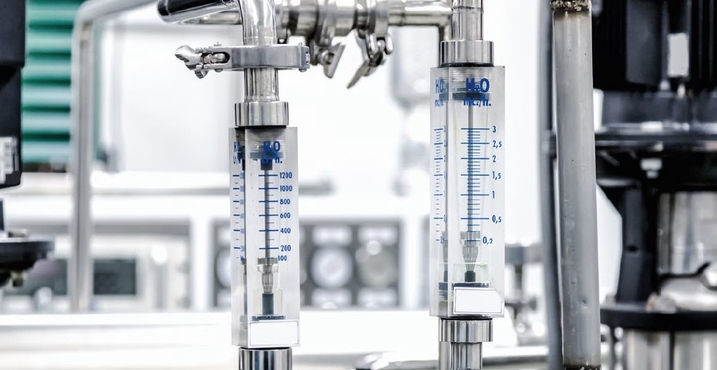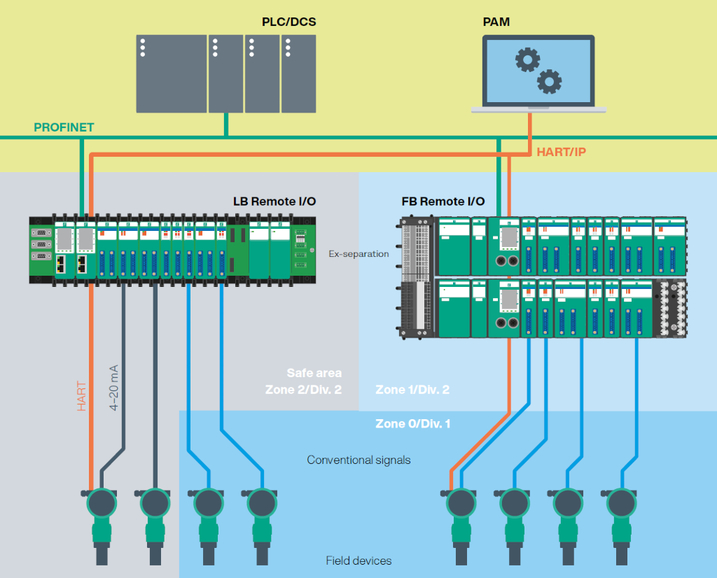Using Remote I/O Systems for the Efficient Digitalization of Plants
Migrating to Digital Communication without Replacing Devices

The Application
During the service life of a process plant, the measurement and control technology will need replacing once or twice. This provides the user with the perfect opportunity to install upgraded control technology and drive forward digitalization at the plant using digital communication methods. At the same time, the user is able to protect the investment already made in the existing base of field devices installed in the plant that use an analog connection. Digital communication improves plant operating efficiency by making specific use of the higher volume of information available, transferring data accurately, and enabling remote configuration and diagnostics.
The Goal
Digitalize the plant to provide better options for servicing and maintenance and therefore avoid plant down time. Comprehensively document the instrumentation—using automated processes where possible—to demonstrate compliance with the increasingly stringent quality management requirements and GMP guidelines. Ensure that expert systems lying outside the traditional scope of automation receive the data they require to be able to propose process optimizations. However, it is important to maintain well-functioning field devices so they can continue to be used in the process. The challenge lies in integrating a number of different devices featuring both analog and discrete sensor technology and actuators into a state-of-the art, Ethernet-based real-time communication infrastructure, and connecting the devices to a wide range of different systems.
The Solution

The remote I/O systems from Pepperl+Fuchs bridge the gap between the base technology already installed and any number of external systems. The previously unused data in the field devices is read out using HART. By using a separate HART modem for each channel in the I/O modules, the data can be read out at the maximum possible speed, which is up to 80 times quicker than when using a conventional HART multiplexer. The configuration, status, and diagnostic data from the field devices is subsequently transferred directly to an asset management system or any other necessary applications using HART/IP. This process is carried out in parallel to the PROFINET protocol used for process control. Other applications are also able to use HART/IP to read out the data and process it as appropriate.
The Advantages
Remote I/O ensures that the investment costs for the digitalization of the plant remain manageable by:
- Maintaining the base field devices already installed in the plant
- Providing direct access to the field devices without any waiting times
- Enabling simple engineering of the asset management system without having to access the control level
- Providing a direct and cost-effective connection via the Ethernet connection also used for process control
This simplifies plant upkeep and reduces maintenance costs. Expert systems can use the data now available to determine process optimizations, such as optimizing the process temperature to increase the quality of the product or reduce energy consumption and therefore costs.
At a Glance
- Digitalization without replacing field devices
- Quick and direct access to all data in the field devices
- Communication carried out in parallel to PROFINET
- Simple engineering








 +49 621 776-0
+49 621 776-0